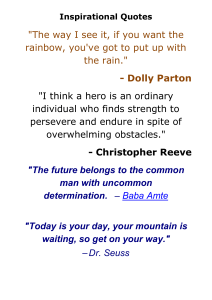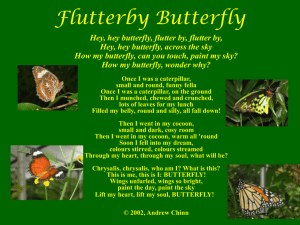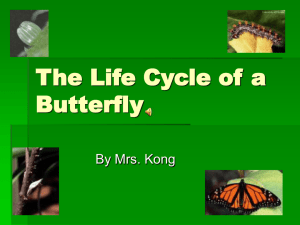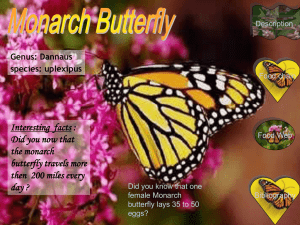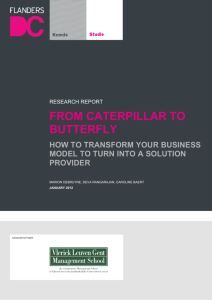Final Lesson - Western Oregon University
advertisement
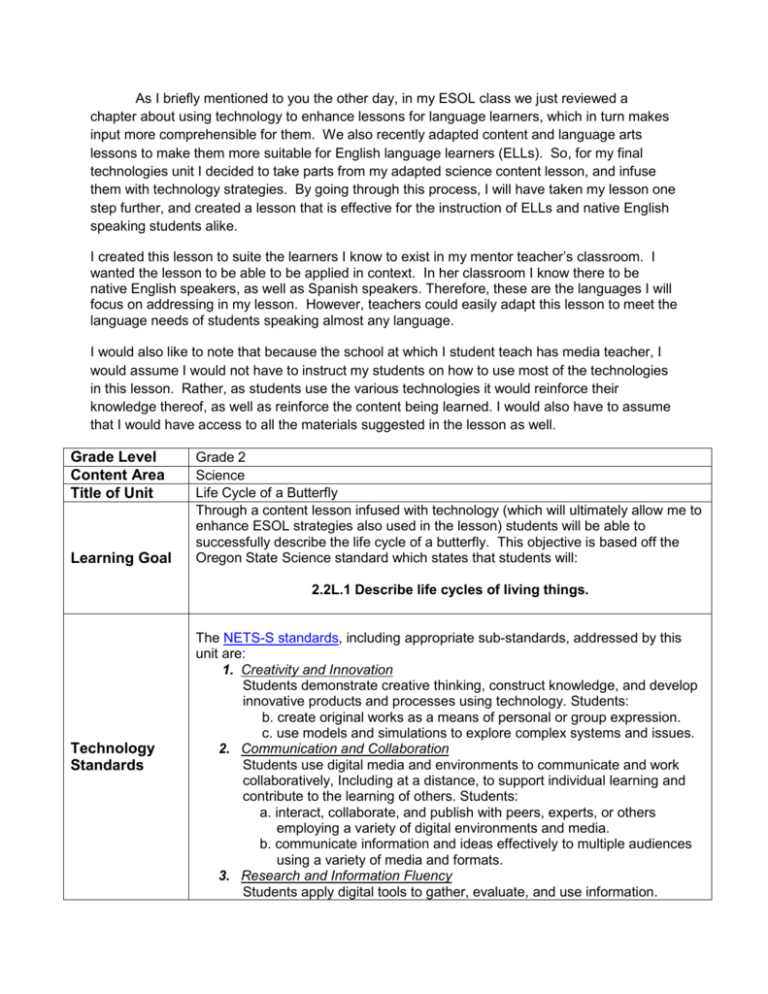
As I briefly mentioned to you the other day, in my ESOL class we just reviewed a chapter about using technology to enhance lessons for language learners, which in turn makes input more comprehensible for them. We also recently adapted content and language arts lessons to make them more suitable for English language learners (ELLs). So, for my final technologies unit I decided to take parts from my adapted science content lesson, and infuse them with technology strategies. By going through this process, I will have taken my lesson one step further, and created a lesson that is effective for the instruction of ELLs and native English speaking students alike. I created this lesson to suite the learners I know to exist in my mentor teacher’s classroom. I wanted the lesson to be able to be applied in context. In her classroom I know there to be native English speakers, as well as Spanish speakers. Therefore, these are the languages I will focus on addressing in my lesson. However, teachers could easily adapt this lesson to meet the language needs of students speaking almost any language. I would also like to note that because the school at which I student teach has media teacher, I would assume I would not have to instruct my students on how to use most of the technologies in this lesson. Rather, as students use the various technologies it would reinforce their knowledge thereof, as well as reinforce the content being learned. I would also have to assume that I would have access to all the materials suggested in the lesson as well. Grade Level Content Area Title of Unit Learning Goal Grade 2 Science Life Cycle of a Butterfly Through a content lesson infused with technology (which will ultimately allow me to enhance ESOL strategies also used in the lesson) students will be able to successfully describe the life cycle of a butterfly. This objective is based off the Oregon State Science standard which states that students will: 2.2L.1 Describe life cycles of living things. Technology Standards The NETS-S standards, including appropriate sub-standards, addressed by this unit are: 1. Creativity and Innovation Students demonstrate creative thinking, construct knowledge, and develop innovative products and processes using technology. Students: b. create original works as a means of personal or group expression. c. use models and simulations to explore complex systems and issues. 2. Communication and Collaboration Students use digital media and environments to communicate and work collaboratively, Including at a distance, to support individual learning and contribute to the learning of others. Students: a. interact, collaborate, and publish with peers, experts, or others employing a variety of digital environments and media. b. communicate information and ideas effectively to multiple audiences using a variety of media and formats. 3. Research and Information Fluency Students apply digital tools to gather, evaluate, and use information. Students: b. locate, organize, analyze, evaluate, synthesize, and ethically use information from a variety of sources and media. 4. Critical Thinking, Problem Solving, and Decision Making Students use critical thinking skills to plan and conduct research, manage projects, solve problems, and make informed decisions using appropriate digital tools and resources. Students: b. plan and manage activities to develop a solution or complete a project. 5. Digital Citizenship Students understand human, cultural, and societal issues related to technology and practice legal and ethical behavior. Students: b. exhibit a positive attitude toward using technology that supports collaboration, learning, and productivity c. demonstrate personal responsibility for lifelong learning d. exhibit leadership for digital citizenship 6. Technology Operations and Concepts Students demonstrate a sound understanding of technology concepts, systems, and operations. Students: b. select and use applications effectively and productively d. transfer current knowledge to learning of new technologies Technologies Integrated One audio recording device (capable of transferring audio files to GarageBand) GarageBand software Computer SMART Board YouTube Microsoft Word Video cameras (amount needed will vary on the amount of students in class) iMovie Resources Text: The Very Hungry Caterpillar or the Spanish version; La Oruga Muy Hambrienta (by Eric Carle); one book for each student in the class, depending on language capabilities One audio recording device for each student in the class (capable of transferring audio files to GarageBand) Chart paper Markers GarageBand software Classroom computer Realia pictures Materials for Word Wall (usually a wall of the classroom, butcher paper, construction paper, and markers are all that is needed) SMART Board Internet Access (see hyperlinks for various sources used) WebQuest Worksheet Video cameras with videotapes or memory cards iMovie 1. Day One: Reading and Recording a Text To get students thinking about the concepts to be explored, I would send home the text The Very Hungry Caterpillar (by Eric Carle) for students to read or to be read to students. Furthermore, if my students are literate in their primary language I would send them home with the Spanish version- La Oruga Muy Hambrienta. This text explains the life cycle of a butterfly, and will provide students with the background knowledge they will need throughout the remainder of the lesson. I would also send home an audio recording device for each student in the class, so that a parent/guardian/caretaker could record the text as they read it aloud. Students will return the next day with their text and audio recordings. This activity should take no more than thirty minutes. 2. Day Two: “Picturing the Process” After students return their texts and audio recording devices, I would then review the concepts learned with them. As a class, we would fill out a K-W-L chart (on big chart paper with markers). A K-W-L chart “tracks what a student knows (K), wants to know (W), and has learned (L) about” the topic (K-W-L Chart, n.d., p. 1). I would then further the students’ knowledge of the concepts by explicitly teaching about the life cycle of a butterfly. Unit Outline To do so, I would introduce and post the sentence frames (made on chart paper with markers) in the front of the classroom as they will be referred to throughout the lesson. Next I would hand out realia pictures, one per student, giving roughly equal numbers of egg pictures, caterpillar pictures, chrysalis pictures, butterfly pictures with the names of the stages they represent written on the back. I would then point out the four names and have students practice saying them, especially; caterpillar, adult and chrysalis (KRISS-uh-liss). These words would then be added to a word wall that will remain displayed throughout instruction. Then I would have students get into groups with those having the same category of pictures. Next, in their groups students need to try to decide what is important about their picture. Have students consider: What is the picture of? What is it doing? What is its purpose or role? I would then explain that the groups of pictures represent the four stages of a butterfly’s life cycle, and that all animals, including people, have a life cycle. Ask students to turn to their neighbor and think-pair-share when explaining the life cycles of: a person: baby, child, adult (produces babies) a pet: baby puppy, adult (has babies) a bird: egg, chick, bird (lays eggs) I would then elaborate that butterflies and some other insect (e.g. flies, beetles, bees, and ants) have a very special life cycle with four stages, called metamorphosis. It means “change”. Note that with other animals the baby looks quite a bit like the adult but is much smaller. However, the baby butterfly looks very different from its parent. Show the class a card with the word metamorphosis (realia) and teach the pronunciation (meh-ta-MORE-fuh-sis). Ask students to guess the right order of the four stages by placing the metamorphosis card on the floor, and asking a group to stand around it in the “right” order bringing their picture cards with them. Once the group and the class think they are correct, have students sit down in this order. Tell the class you are going to show them a video about the life cycle of a butterfly. Also, let them know that during the video they will be able to see if they placed their classmates in the correct order. Show students the YouTube video on the life cycle of a butterfly on the classroom SMART Board. Stop if necessary to reorder students who are demonstrating the four stages of the butterfly’s life cycle. After watching the video ask the volunteer “metamorphosis” group in order: What is the name of the 1st stage? 2nd stage? 3rd stage? 4th stage? Now ask a variety of questions out of sequence to the whole class. Students should continue to refer to the sentence frames provided as well as the vocabulary from the word wall. Which stage has a caterpillar? Which stage comes 1st? Which stage come last/4th? What is the name of the 3rd stage? What is the name of the butterfly’s life cycle? I would anticipate that part of the lesson would take about an hour to complete. 3. After school, I would download the audio files collected from students into GarageBand and make podcasts for the The Very Hungry Caterpillar or the Spanish version-La Oruga Muy Hambrienta. Depending on the number of students in the class, this process should take about one hour. 4. Day Three: WebQuests The next day I would tell students that the podcasts are available for them to listen to while they have library time or at any point there is time to read during the school day. I would encourage students to listen to the story in another language if possible. We would then move on to exploring the life cycle of a butterfly through a WebQuest. Wright (2010) notes that WebQuests are “activities designed by teachers to structure students’ time on the internet by directing them to specific Web sites and giving them tasks to complete as they visit each site” (p. 298). Click here to preview the WebQuest I created for this lesson. Something I wasn’t able to do for this lesson, but would like to do in the future is to have someone translate the directions to this assignment in Spanish and insert the audio clip into the worksheet. This would be helpful to language learners so that they could understand what is being asked of them in a language they are familiar with, and could then be more successful in completing the assignment. Students should be given one hour to complete the worksheet. 5. Day Four: Classroom Video For the final part of this lesson I would create a class video with students about the life cycle of a butterfly. As a class we would slowly write a script on large chart paper. I would anticipate this taking at least 3 days to complete. Then I would type up the script and assign different speaking parts to students; providing the words they will say in the video on a little piece of paper. I would group students according to their roles, and which part of the cycle they are explaining, and allow them to take turns using the cameras to videotape each other. I feel that I would really need to make clear to students the guidelines for using this equipment. Before handing over the cameras, we would review how to use them and how to handle them. We would then work on shooting our video during the hour of the school day set aside for science instruction over the period of another 3 days. Click here for an example of a classroom video. 6. Day 11: After we were done shooting the video I would work with students in their groups to edit their sections of the film in iMovie. I would allow each group the whole hour of science instruction to work with me in bettering their part of the video, while my other students worked on various other assignments. There would be four groups that would need time to edit, so this process would take four additional days. 7. Day 15: “SMART” Review To finish up our unit on the life cycle of a butterfly, I would invite parents into the classroom during the time set aside for science instruction to view (on the SMARTboard) the video made by students. Gibson, R., & Laythorpe, J. (n.d.). Butterflies. University of Calgary. Retrieved References November 21, 2011, from http://www.learningbydesign.ucalgary.ca/content/public/Butterfly_Lessons_ 3.pdf K-W-L Chart (n.d.). ReadWriteThink. Retrieved December 3, 2011, from http://www.readwritethink.org/classroom-resources/printouts/chart-a30226.html Wright, W. E. (2010). Foundations for teaching English language learners: research, theory, policy, and practice. Philadelphia: Caslon Pub. Note: Other various resources are hyperlinked throughout the unit.
